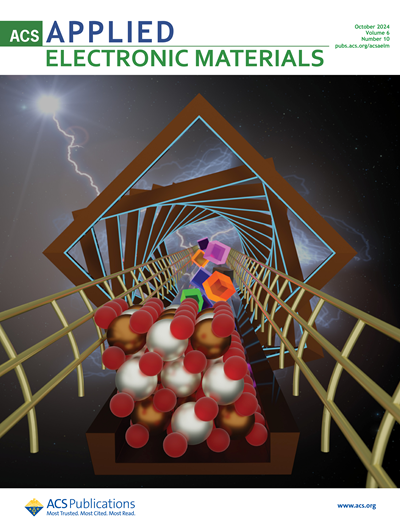利用 MW-2DCOS 荧光光谱和扫描电子显微镜对养蟹园区 DOM 分量变化和去除过程中关键因素的新认识
IF 4.3
3区 材料科学
Q1 ENGINEERING, ELECTRICAL & ELECTRONIC
引用次数: 0
摘要
随着中国河蟹养殖业的迅猛发展,河蟹废水处理的迫切性无论如何强调都不为过。因此,本研究采用激发-发射矩阵(EEM)荧光光谱并行因子分析(PARAFAC)、移动窗二维相关光谱(MW-2DCOS)和结构方程模型(SEM)来识别河蟹养殖园区中溶解有机物(DOM)组分的变化,并揭示与去除过程相关的潜在因子。通过 EEM-PARAFAC 从 DOM 中提取了以下七种成分(C1-C7):C1:微生物副产物类物质;C2:可见色氨酸类物质;C3:富里酸类物质;C4:酚类物质;C5:紫外酪氨酸类物质;C6:D-色氨酸类物质;C7:L-色氨酸类物质:L-色氨酸类物质。有趣的是,河蟹养殖池塘中 DOM 的代表性成分 C7(39.20%)在曝气池中被好氧微生物深度降解,而河蟹池塘中则没有 C6。根据 2DCOS 方法,组分的变化顺序为 C7 → C4 → C6 → C5 → C2 → C1 → C3,官能团的变化顺序为羧基 → 酚基 → 芳香基。根据 MW-2DCOS 的评估,在曝气池中,各组分,尤其是 C2、C5 和 C6 组分(C4 和 C7 除外)的 Fmax 呈指数增长,出现了累积效应。在河蟹养殖系统中,C2、C5 和 C7 的去除率分别为 24.26%、39.42% 和 98.25%,而在稻田、净化池和曝气池中则被深度降解。经扫描电镜评估,有机物去除的潜因子为 C1、C2、C4、C5、SUVA254、CODMn 和 DO。该研究有助于全面描述河蟹养殖园区中 DOMs 成分和功能基团的去除特征。本文章由计算机程序翻译,如有差异,请以英文原文为准。
New Insights into Changes in DOM Fractions in a Crab Farming Park and Key Factors in the Removal Process Using Fluorescence Spectra with MW-2DCOS and SEM
With the explosion of crab farming in China, the urgent need to treat crab wastewater can never be overemphasized. Hence, in this study, excitation–emission matrix (EEM) fluorescence spectroscopy with parallel factor analysis (PARAFAC), moving window two-dimensional correlation spectroscopy (MW-2DCOS) and structural equation modeling (SEM) were employed to identify changes in the dissolved organic matter (DOM) fractions in a crab farming park and reveal latent factors associated with removal processes. Seven components (C1–C7) were extracted from DOMs by EEM-PARAFAC as follows: C1: microbial byproduct-like substances, C2: visible-tryptophan-like substances, C3: fulvic-like substances, C4: phenolic-like substances, C5: ultraviolet tyrosine-like substances, C6: D-tryptophan-like substances and C7: L-tryptophan-like substances. Interestingly, C7 (39.20%), a representative component of DOM in the crab farming pond, was deeply degraded in the aeration pond by aerobic microbes, whereas C6 was absent in the crab pond. According to 2DCOS, the changing order of the components was C7 → C4 → C6 → C5 → C2 → C1 → C3, and the changing order of the functional groups was carboxylic → phenolic → aromatic. As assessed by MW-2DCOS, the Fmax of the components, especially components C2, C5 and C6 (and with the exception of C4 and C7) exponentially increased in the aeration pond, where an accumulative effect occurred. C2, C5 and C7 were removed by 24.26%, 39.42% and 98.25% in the crab farming system, and were deeply degraded in the paddy-field, purification pond and aeration pond, respectively. As assessed by SEM, the latent factors of organic matter removal were C1, C2, C4, C5, SUVA254, CODMn and DO. This study could be conducive to comprehensively characterizing the removal of components and functional groups of DOMs in crab farming parks.
求助全文
通过发布文献求助,成功后即可免费获取论文全文。
去求助
来源期刊

ACS Applied Electronic Materials
Multiple-
CiteScore
7.20
自引率
4.30%
发文量
567
期刊介绍:
ACS Applied Electronic Materials is an interdisciplinary journal publishing original research covering all aspects of electronic materials. The journal is devoted to reports of new and original experimental and theoretical research of an applied nature that integrate knowledge in the areas of materials science, engineering, optics, physics, and chemistry into important applications of electronic materials. Sample research topics that span the journal's scope are inorganic, organic, ionic and polymeric materials with properties that include conducting, semiconducting, superconducting, insulating, dielectric, magnetic, optoelectronic, piezoelectric, ferroelectric and thermoelectric.
Indexed/Abstracted:
Web of Science SCIE
Scopus
CAS
INSPEC
Portico
 求助内容:
求助内容: 应助结果提醒方式:
应助结果提醒方式:


